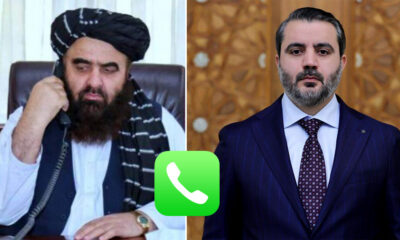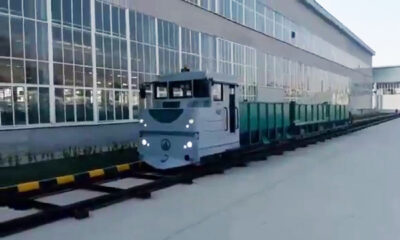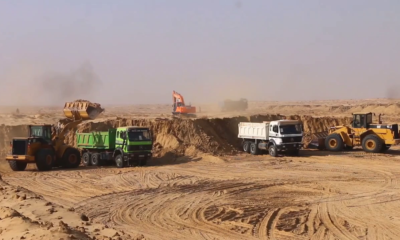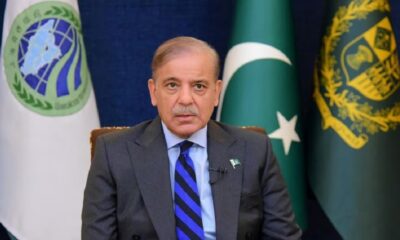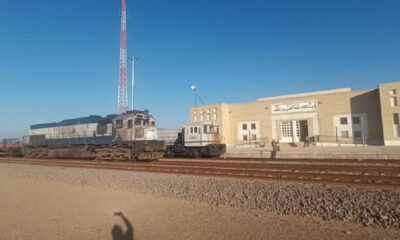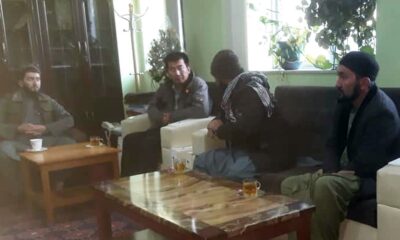World
At least 10 Palestinians killed in major Israeli raids across West Bank
Palestinian health authorities said at least 10 Palestinians had been killed in different areas of the West Bank by Israeli forces during the operation.
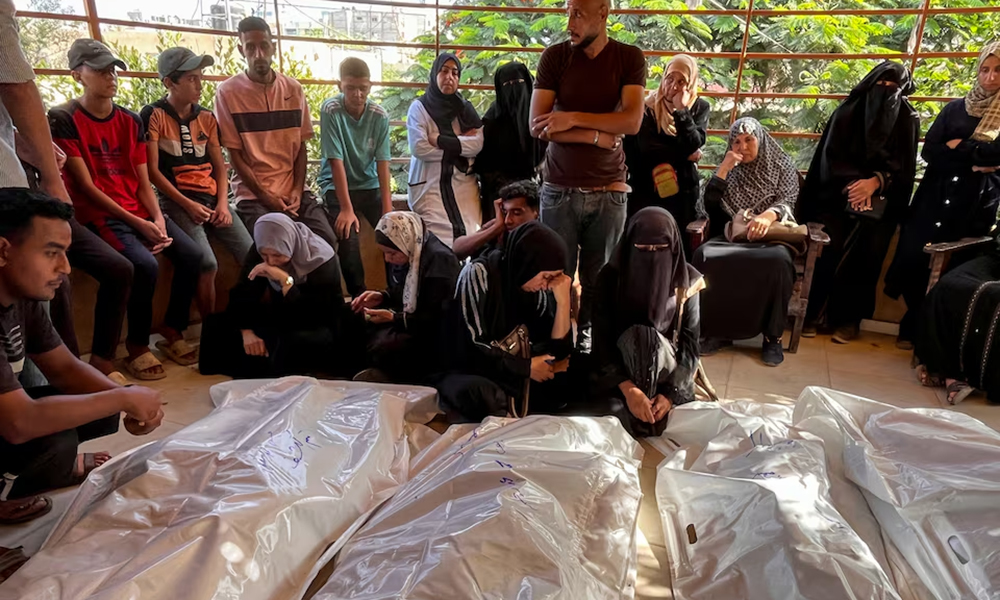
Hundreds of Israeli troops backed by helicopters, drones and armoured personnel carriers raided the flashpoint cities of Jenin and Tulkarm and other areas in the occupied West Bank on Wednesday, killing at least 10 Palestinians, Reuters reported.
The assault, one of the largest seen in the West Bank for months, followed a series of smaller raids in the area over recent weeks as Israeli forces sought to crush groups of fighters from Palestinian militant groups.
With Israeli forces battling Hamas militants in the Gaza Strip and facing a serious escalation of tensions with Iranian-backed Hezbollah in southern Lebanon, Wednesday's operation underscored the multiple security threats Israel has been battling since the start of the Gaza war last year.
The armed wings of the Hamas, Islamic Jihad and Fatah factions said in separate statements their gunmen were detonating bombs against Israeli military vehicles in Jenin, Tulkarm and Far'a, a town in the Jordan Valley.
After the initial assault, the sounds of gunfire and explosions could be heard from Jenin's crowded refugee camp, a heavily built up township adjacent to the main urban district that has been a hotbed of militant activity for years, read the report.
Palestinian health authorities said at least 10 Palestinians had been killed in different areas of the West Bank by Israeli forces during the operation.
A short distance outside Jenin, blood soaked the ground next to a damaged car and an impact crater from a drone strike the Israeli military said had killed three militants.
The Palestinian health ministry said troops had surrounded Jenin's main hospital, blocking off access with earth mounds - a measure the military said was intended to prevent fighters seeking refuge.
A military spokesperson said Wednesday's operation followed a sharp rise in militant activity in recent months, with more than 150 attacks from Tulkarm and Jenin involving shooting or explosives over the past year.
He said the military assessed that there was an "immediate threat" to civilians but that the operation was part of a broad strategy aimed at thwarting attacks.
"This terror threat in this area is not new, it hasn't started yesterday and it's not going to end tomorrow," Lieutenant Colonel Nadav Shoshani told a media briefing.
Earlier, the military released the names of five Palestinians identified as militants who were killed in Tulkarm on Monday. Two were claimed by Hamas and three by Islamic Jihad, Reuters reported.
As well as the major raids in Jenin and Tulkarm, two of the most volatile cities in the northern West Bank, the military said forces also raided Far'a near Tubas in the Jordan Valley, killing at least four people in a drone strike.
Masoud Naaja, the father of two young men killed in the attack, said he was giving water to some men who asked for a drink when he was wounded.
"In seconds, very fast, we felt like something came down on us from the sky and there was an explosion," he said. "When I put my hand on my chest, it was full of shrapnel and blood."
Clashes in the West Bank have escalated since the start of the Israel-Hamas war in Gaza. Israel, which says Iran provides weapons and support to the militant factions, has stepped up operations, while Jewish settlers have also launched frequent vigilante-style attacks on Palestinian communities.
Thousands of Palestinians have been arrested in raids and more than 660 - fighters and civilians - have been killed in the West Bank and East Jerusalem since the war in Gaza began nearly 11 months ago, according to Palestinian health ministry figures.
At least 30 Israelis have been killed in attacks in Jerusalem and the West Bank during the period, according to Israeli tallies, read the report.
The latest round of Israeli-Palestinian violence began on Oct. 7 after Hamas militants stormed from Gaza into southern Israel, killing 1,200 and taking more than 250 hostages, according to Israeli figures.
Israel's Gaza campaign has since demolished swathes of the enclave, displaced nearly all its 2.3 million people multiple times, given rise to deadly hunger and disease and killed more than 40,500 people, Palestinian health officials say.
Internationally mediated talks to end the conflict continue, with Hamas and Israel trading blame for a lack of progress, and the U.S. expressing optimism that a ceasefire can be reached.
World
Russian air-defense system downed Azerbaijan plane: Reuters

Russian air defences downed an Azerbaijan Airlines plane that crashed in Kazakhstan, killing 38 people, Reuters reported citing four sources with knowledge of the preliminary findings of Azerbaijan's investigation into the disaster.
Flight J2-8243 crashed on Wednesday in a ball of fire near the city of Aktau in Kazakhstan after diverting from an area of southern Russia where Moscow has repeatedly used air defence systems against Ukrainian drone strikes.
The Embraer passenger jet had flown from Azerbaijan's capital Baku to Grozny, in Russia's southern Chechnya region, before veering off hundreds of miles across the Caspian Sea.
It crashed on the opposite shore of the Caspian after what Russia's aviation watchdog said was an emergency that may have been caused by a bird strike.
Officials did not explain why it had crossed the sea. The nearest Russian airport on the plane's flight path, Makhachkala, was closed on Wednesday morning.
One of the Azerbaijani sources familiar with Azerbaijan's investigation into the crash told Reuters that preliminary results showed the plane was struck by a Russian Pantsir-S air defence system. Its communications were paralysed by electronic warfare systems on the approach into Grozny, the source said.
"No one claims that it was done on purpose. However, taking into account the established facts, Baku expects the Russian side to confess to the shooting down of the Azerbaijani aircraft," the source said.
Three other sources confirmed that the Azeri investigation had come to the same preliminary conclusion. Russia's Defence Ministry did not respond to a request for comment.
A U.S. official told Reuters on Thursday there were early indications a Russian anti-aircraft system may have struck the plane. Canada said it was deeply concerned by reports that Russian air defence may have struck the aircraft.
"We call on Russia to allow for an open and transparent investigation into the incident and to accept its findings," the Canadian foreign ministry said in a statement on X.
Kazakh Deputy Prime Minister Qanat Bozymbaev said he could neither confirm nor deny the thesis that Russian air defences downed the plane.
Asked about the possibility that Russian air defences shot at the plane, the Kazakh transport prosecutor for the region where the plane came down said the investigation had yet to reach a firm conclusion.
The Kremlin, asked before the Reuters report about the idea that the aircraft had been shot at by Russian air defences, said it would be improper to comment until the inquiry was concluded.
"It is wrong to build hypotheses before the conclusions of the investigation," Kremlin spokesman Dmitry Peskov said.
WRECKAGE
Footage shot by passengers on the plane before it crashed showed oxygen masks down and people wearing life vests. Later footage showed bloodied and bruised passengers climbing out of the plane. There were 29 survivors.
Pictures of the plane wreckage showed what appeared to be shrapnel damage to the tail section of the plane.
Aviation security firm Osprey Flight Solutions said in an alert to airlines on Wednesday that footage of the wreckage and the circumstances around the air space in southwest Russia indicated the possibility that the airliner was hit by some form of anti-aircraft fire.
Ukrainian military drones have repeatedly targeted Russia's southern regions in recent months, triggering Russian air defences. Russia and Ukraine have been at war since Moscow's invasion of its neighbour in February 2022.
Earlier on Wednesday, the Russian Defence Ministry had reported the downing of 59 Ukrainian drones over several regions.
Some were reportedly shot down in closed air space over regions bordering Ukraine, including the Sea of Azov. Flight operations were reportedly temporarily suspended at Russia’s Kazan Airport due to the activity.
In addition, publicly available ADS-B flight tracking data shows that the Azerbaijani aircraft experienced GPS jamming throughout its flight over southwest Russia, the alert said.
Russia uses advanced electronic jamming equipment to confuse Ukrainian drone location and communication systems and a large number of air defence systems have been deployed to shoot down the drones.
World
14 Syrian police killed in ambush as unrest spreads
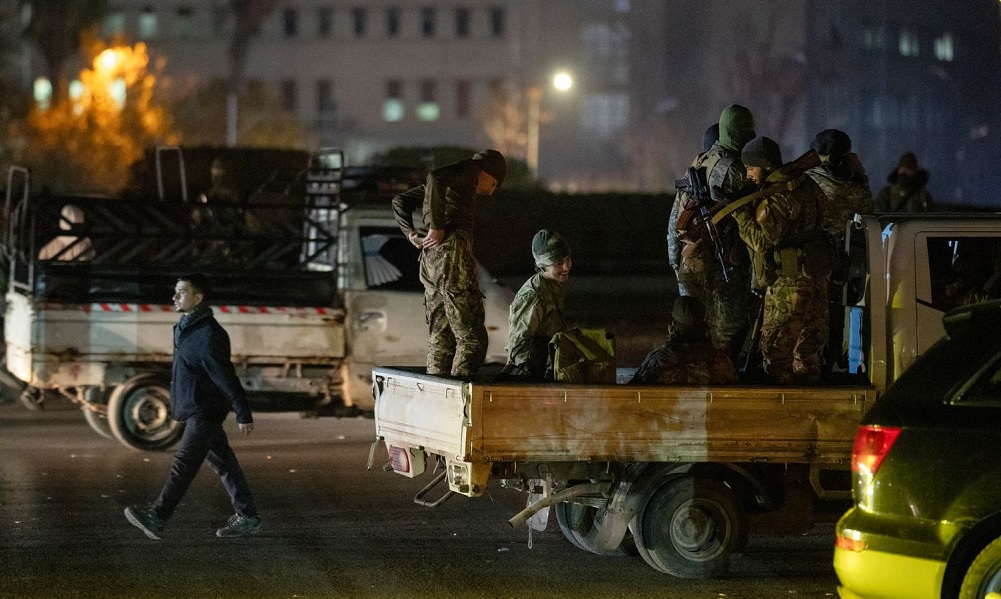
Fourteen members of the Syrian police were killed in an "ambush" by forces loyal to the ousted government in the Tartous countryside, the transitional administration said early on Thursday, as demonstrations and an overnight curfew elsewhere marked the most widespread unrest since Bashar al-Assad's removal more than two weeks ago.
Syria's new interior minister said on Telegram that 10 police members were also wounded by what he called "remnants" of the Assad government in Tartous, vowing to crack down on "anyone who dares to undermine Syria's security or endanger the lives of its citizens," Reuters reported.
Earlier, Syrian police imposed an overnight curfew in the city of Homs, state media reported, after unrest there linked to demonstrations that residents said were led by members of the minority Alawite and Shi’ite Muslim religious communities.
Reuters could not immediately confirm the demands of the demonstrators nor the degree of disturbance that took place.
Some residents said the demonstrations were linked to pressure and violence in recent days aimed at members of the Alawite minority, a sect long seen as loyal to Assad, who was toppled by Sunni Islamist rebels on Dec. 8.
Spokespeople for Syria’s new ruling administration led by the Hayat Tahrir al-Sham (HTS) group, a former al Qaeda affiliate, did not immediately respond to requests for comment on the curfew.
State media said the curfew was being imposed for one night, from 6 pm local time (1500 GMT) until 8 am on Thursday morning.
The country's new leaders have repeatedly vowed to protect minority religious groups, who fear the former rebels now in control could seek to impose a conservative form of Islamist government.
Small demonstrations also took place in other areas on or near Syria’s coast, where most of the country’s Alawite minority live, including in Tartous.
The demonstrations took place around the time an undated video was circulated on social networks showing a fire inside an Alawite shrine in the city of Aleppo, with armed men walking around inside and posing near human bodies.
The interior ministry said on its official Telegram account the video dated back to the rebel offensive on Aleppo in late November and the violence was carried out by unknown groups, adding whoever was circulating the video now appeared to be seeking to incite sectarian strife.
The ministry also said some members of the former regime had attacked interior ministry forces in Syria’s coastal area on Wednesday, leaving a number of dead and wounded.
World
Global hunger crisis deepens as major nations skimp on aid
The U.S. plays the leading role in preventing and combating starvation across the world. It provided $64.5 billion in humanitarian aid over the last five years. That was at least 38% of the total such contributions recorded by the U.N.
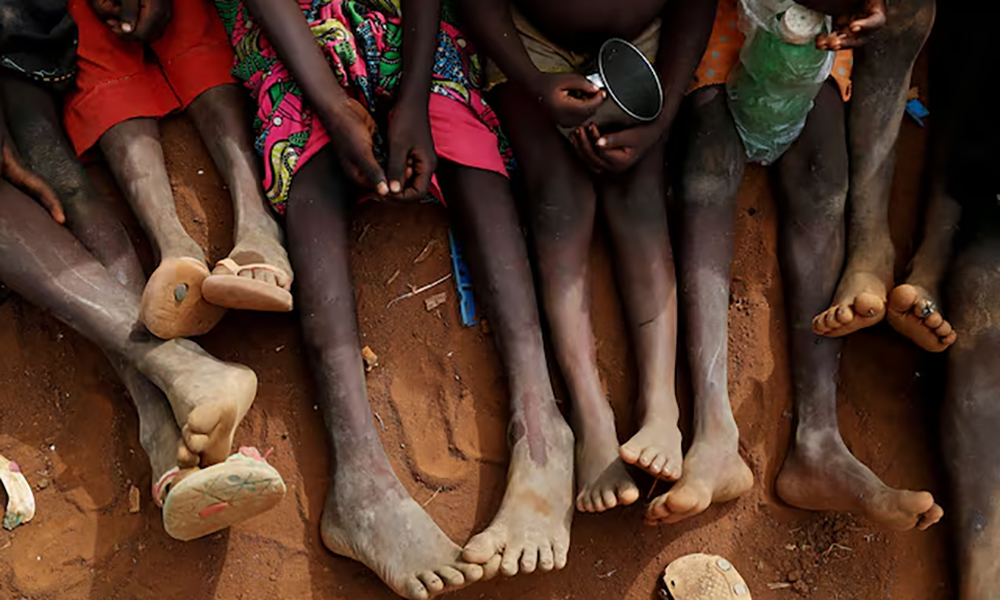
It’s a simple but brutal equation: The number of people going hungry or otherwise struggling around the world is rising, while the amount of money the world’s wealthiest nations are contributing toward helping them is dropping, Reuters reported.
The result: The United Nations says that, at best, it will be able to raise enough money to help about 60% of the 307 million people it predicts will need humanitarian aid next year. That means at least 117 million people won’t get food or other assistance in 2025.
The U.N. also will end 2024 having raised about 46% of the $49.6 billion it sought for humanitarian aid across the globe, its own data shows. It’s the second year in a row the world body has raised less than half of what it sought. The shortfall has forced humanitarian agencies to make agonizing decisions, such as slashing rations for the hungry and cutting the number of people eligible for aid.
The consequences are being felt in places like Syria, where the World Food Program (WFP), the U.N.’s main food distributor, used to feed 6 million people. Eyeing its projections for aid donations earlier this year, the WFP cut the number it hoped to help there to about 1 million people, said Rania Dagash-Kamara, the organization’s assistant executive director for partnerships and resource mobilization.
Dagash-Kamara visited the WFP's Syria staff in March. “Their line was, ‘We are at this point taking from the hungry to feed the starving,’” she said in an interview.
U.N. officials see few reasons for optimism at a time of widespread conflict, political unrest and extreme weather, all factors that stoke famine. “We have been forced to scale back appeals to those in most dire need,” Tom Fletcher, U.N. under-secretary-general for humanitarian affairs and emergency relief coordinator, told Reuters.
The funding gap
Conflict, extreme weather and soaring inflation have left growing numbers of people in need of humanitarian aid. Also increasing is the gap between the funding the U.N. seeks for humanitarian relief and the amount donors actually provide, read the report.
Financial pressures and shifting domestic politics are reshaping some wealthy nations’ decisions about where and how much to give. One of the U.N.’s largest donors – Germany – already shaved $500 million in funding from 2023 to 2024 as part of general belt tightening. The country’s cabinet has recommended another $1 billion reduction in humanitarian aid for 2025. A new parliament will decide next year’s spending plan after the federal election in February.
Humanitarian organizations also are watching to see what U.S. President-elect Donald Trump proposes after he begins his second term in January.
Trump advisers have not said how he will approach humanitarian aid, but he sought to slash U.S. funding in his first term. And he has hired advisers who say there is room for cuts in foreign aid.
The U.S. plays the leading role in preventing and combating starvation across the world. It provided $64.5 billion in humanitarian aid over the last five years. That was at least 38% of the total such contributions recorded by the U.N.
SHARING THE WEALTH
The majority of humanitarian funding comes from just three wealthy donors: the U.S., Germany and the European Commission. They provided 58% of the $170 billion recorded by the U.N. in response to crises from 2020 to 2024.
Three other powers – China, Russia and India – collectively contributed less than 1% of U.N.-tracked humanitarian funding over the same period, according to a Reuters review of U.N. contributions data.
The inability to close the funding gap is one of the major reasons the global system for tackling hunger and preventing famine is under enormous strain. The lack of adequate funding – coupled with the logistical hurdles of assessing need and delivering food aid in conflict zones, where many of the worst hunger crises exist – is taxing efforts to get enough aid to the starving. Almost 282 million people in 59 countries and territories were facing high levels of acute food insecurity in 2023. Reuters is documenting the global hunger-relief crisis in a series of reports, including from hard-hit Sudan, Myanmar and Afghanistan, Reuters reported.
The failure of major nations to pull their weight in funding for global initiatives has been a persistent Trump complaint. Project 2025, a set of policy proposals drawn up by Trump backers for his second term, calls on humanitarian agencies to work harder to collect more funding from other donors and says this should be a condition for additional U.S. aid.
On the campaign trail, Trump tried to distance himself from the controversial Project 2025 blueprint. But after winning the election, he chose one of its key architects, Russell Vought, to run the U.S. Office of Management and Budget, a powerful body that helps decide presidential priorities and how to pay for them. For secretary of state, the top U.S. diplomat, he tapped Florida Senator Marco Rubio, who has a record of supporting foreign aid.
Project 2025 makes particular note of conflict – the very factor driving most of today’s worst hunger crises.
“Humanitarian aid is sustaining war economies, creating financial incentives for warring parties to continue fighting, discouraging governments from reforming, and propping up malign regimes,” the blueprint says. It calls for deep cuts in international disaster aid by ending programs in places controlled by “malign actors.”
Billionaire Elon Musk has been tapped by Trump to co-lead the Department of Government Efficiency (DOGE), a new body that will examine waste in government spending. Musk said this month on his social media platform, X, that DOGE would look at foreign aid.
The aid cuts Trump sought in his first term didn’t pass Congress, which controls such spending. Senator Lindsey Graham, a South Carolina Republican and close Trump ally on many issues, will chair the Senate committee that oversees the budget. In 2019, he called “insane” and “short-sighted” a Trump proposal to cut the budget for foreign aid and diplomacy by 23%.
Graham, Vought, Rubio and Musk did not respond to questions for this report.
OLYMPICS AND SPACESHIPS
So many people have been hungry in so many places for so long that humanitarian agencies say fatigue has set in among donors. Donors receive appeal after appeal for help, yet have limits on what they can give. This has led to growing frustration with major countries they view as not doing their share to help.
Jan Egeland was U.N. humanitarian chief from 2003 to 2006 and now heads the Norwegian Refugee Council, a nongovernmental relief group. Egeland said it is “crazy” that a tiny country like Norway is among the top funders of humanitarian aid. With a 2023 gross national income (GNI) less than 2% the size of America’s, Norway ranked seventh among governments who gave to the U.N. that year, according to a Reuters review of U.N. aid data. It provided more than $1 billion.
Two of the five biggest economies – China and India – gave a tiny fraction as much.
China ranked 32nd among governments in 2023, contributing $11.5 million in humanitarian aid. It has the world’s second-largest GNI.
India ranked 35th that year, with $6.4 million in humanitarian aid. It has the fifth-largest GNI.
How aid stacks up
The United States and Germany were top donors in 2023.
Norway gave the most in aid when adjusted for the contributing nation’s gross national income.
Egeland noted that China and India each invested far more in the type of initiatives that draw world attention. Beijing spent billions hosting the 2022 Winter Olympics, and India spent $75 million in 2023 to land a spaceship on the moon.
“How come there is not more interest in helping starving children in the rest of the world?” Egeland said. “These are not developing countries anymore. They are having Olympics ... They are having spaceships that many of the other donors never could dream of.”
Liu Pengyu, spokesman for the Chinese embassy in Washington, said China has always supported the WFP. He noted that it feeds 1.4 billion people within its own borders. “This in itself is a major contribution to world food security,” he said.
India’s ambassador to the U.N. and its Ministry of External Affairs did not respond to questions for this report.
To analyze giving patterns, Reuters used data from the U.N.’s Financial Tracking Service, which records humanitarian aid. The service primarily catalogs money for U.N. initiatives and relies on voluntary reporting. It doesn’t list aid funneled elsewhere, including an additional $255 million that Saudi Arabia reported giving this year through its own aid organization, the King Salman Humanitarian Aid & Relief Centre.
RESTRICTIONS AND DELAYS
When aid does come, it is sometimes late, and with strings attached, making it hard for humanitarian organizations to respond flexibly to crises.
Aid tends to arrive “when the animals are dead, people are on the move, and children are malnourished,” said Julia Steets, director of the Global Public Policy Institute, a think tank based in Berlin.
Steets has helped conduct several U.N.-sponsored evaluations of humanitarian responses. She led one after a drought-driven hunger crisis gripped Ethiopia from 2015 to 2018. The report concluded that while famine was avoided, funding came too late to prevent a huge spike in severe acute malnutrition in children. Research shows that malnutrition can have long-term effects on children, including stunted growth and reduced cognitive abilities.
Further frustrating relief efforts are conditions that powerful donors place on aid. Donors dictate details to humanitarian agencies, down to where food will go. They sometimes limit funding to specific U.N. entities or nongovernmental organizations. They often require that some money be spent on branding, such as displaying donors’ logos on tents, toilets and backpacks.
Aid workers say such earmarking has forced them to cut rations or aid altogether.
The U.S. has a long-standing practice of placing restrictions on nearly all of its contributions to the World Food Program, one of the largest providers of humanitarian food assistance. More than 99% of U.S. donations to the WFP carried restrictions in each of the last 10 years, according to WFP data reviewed by Reuters.
Asked about the aid conditions, a spokesperson for the U.S. Agency for International Development, which oversees American humanitarian spending, said the agency acts “in accordance with the obligations and standards required by Congress.”
Those standards aim to improve the efficiency and effectiveness of humanitarian aid, the spokesperson said, and aid conditions are meant to maintain “an appropriate measure of oversight to ensure the responsible use of U.S. taxpayer funds.”
Some current and former officials with donor organizations defend their restrictions. They point to theft and corruption that have plagued the global food aid system.
In Ethiopia, as Reuters has detailed, massive amounts of aid from the U.N. World Food Program were diverted , in part because of the organization’s lax administrative controls. An internal WFP report on Sudan identified a range of problems in the organization’s response to an extreme hunger crisis there, Reuters reported earlier this month, including an inability to react adequately and what the report described as “anti-fraud challenges.”
The U.N. has a “zero tolerance policy” toward “interferences” that disrupt aid and is working with donors to manage risks, said Jens Laerke, spokesperson for the U.N. Office for the Coordination of Humanitarian Affairs.
Solving the U.N.’s broader fundraising challenges will require a change in its business model, said Martin Griffiths, who stepped down as U.N. humanitarian relief chief in June. “Obviously, what we need to do is to have a different source of funding.”
In 2014, Antonio Guterres, now the U.N.'s secretary-general and then head of its refugee agency, suggested a major change that would charge U.N. member states fees to fund humanitarian initiatives, Reuters reported.
The U.N.’s budget and peacekeeping missions already are funded by a fee system. Such funding would offer humanitarian agencies more flexibility in responding to need.
The U.N. explored Guterres’ idea in 2015. But donor countries preferred the current system, which lets them decide case by case where to send contributions, according to a U.N. report on the proposal.
Laerke said the U.N. is working to diversify its donor base.
“We can’t just rely on the same club of donors, generous as they are and appreciative as we are of them,” Laerke said.
-
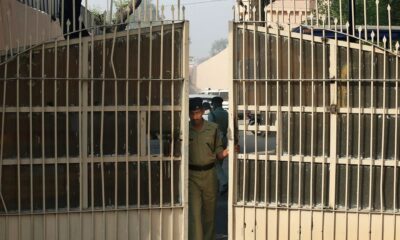
 Latest News3 days ago
Latest News3 days agoOver 50 Afghan inmates freed from Pakistani prisons
-
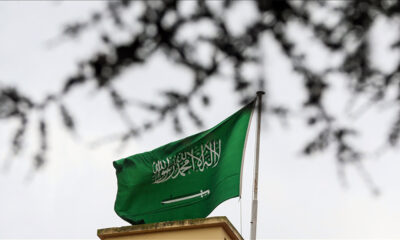
 Latest News5 days ago
Latest News5 days agoSaudi Arabia reopens embassy in Afghanistan
-

 Latest News4 days ago
Latest News4 days agoTrump criticizes abandoning of equipment in Afghanistan, vows to rebuild military
-
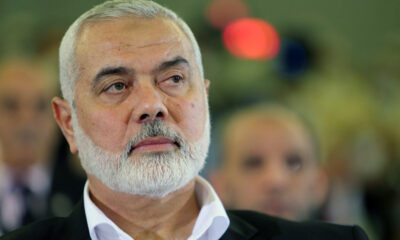
 World4 days ago
World4 days agoIsraeli defense minister claims responsibility for first time for Hamas leader Haniyeh’s assassination
-
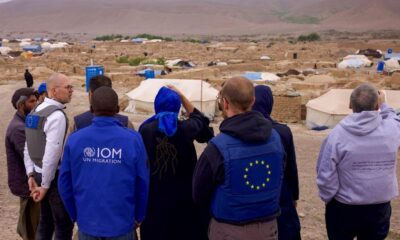
 Latest News4 days ago
Latest News4 days agoIOM appeals for nearly $500 million to support Afghans in 2025
-
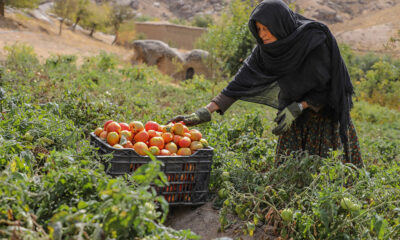
 Latest News3 days ago
Latest News3 days agoJapan, UNDP launch new community resilience programme in Afghanistan
-
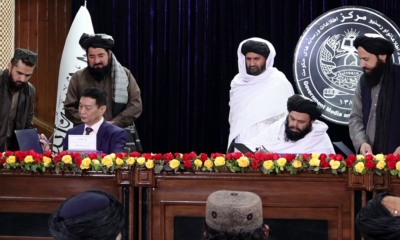
 Latest News3 days ago
Latest News3 days agoMines ministry signs cement production contract in Logar with private company
-

 Sport3 days ago
Sport3 days agoICC announces schedule for 2025 Men’s Champions Trophy


